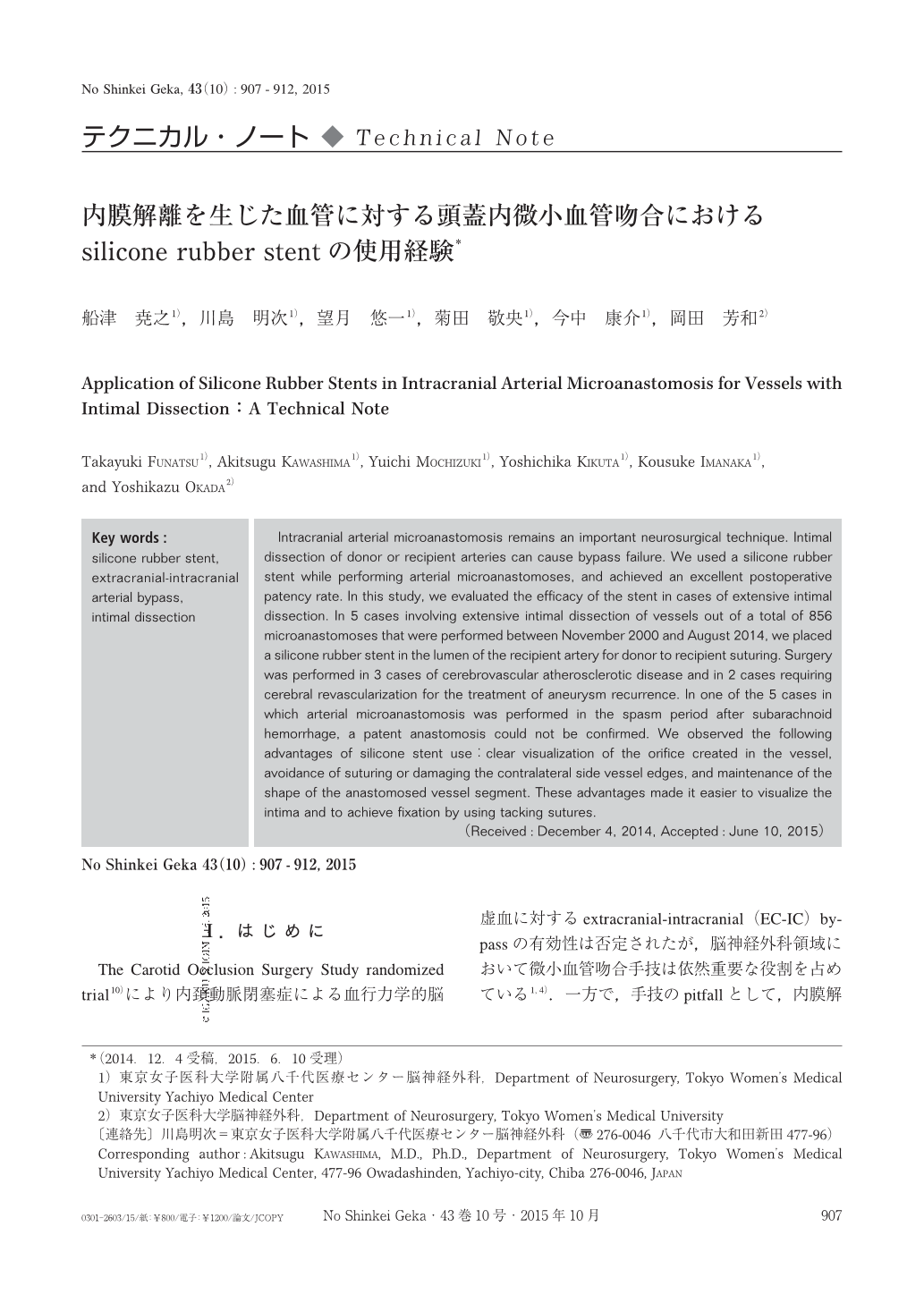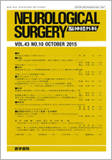Japanese
English
- 有料閲覧
- Abstract 文献概要
- 1ページ目 Look Inside
- 参考文献 Reference
Ⅰ.はじめに
The Carotid Occlusion Surgery Study randomized trial10)により内頚動脈閉塞症による血行力学的脳虚血に対するextracranial-intracranial(EC-IC)bypassの有効性は否定されたが,脳神経外科領域において微小血管吻合手技は依然重要な役割を占めている1,4).一方で,手技のpitfallとして,内膜解離を生じた血管の微小血管吻合は,graft閉塞などトラブルの原因となることがある7,9).
われわれは脳神経外科領域の微小血管吻合におけるsilicone rubber stentの有用性を報告してきた3,8).これまではもやもや病など,特に血管径が細いrecipient arteryに対する効果を強調してきたが,今回は内膜解離を生じ吻合操作が困難となることが予想される血管に対する微小血管吻合におけるsilicone rubber stentの使用経験を報告し,有用性,問題点および吻合時の工夫について述べる.
Intracranial arterial microanastomosis remains an important neurosurgical technique. Intimal dissection of donor or recipient arteries can cause bypass failure. We used a silicone rubber stent while performing arterial microanastomoses, and achieved an excellent postoperative patency rate. In this study, we evaluated the efficacy of the stent in cases of extensive intimal dissection. In 5 cases involving extensive intimal dissection of vessels out of a total of 856 microanastomoses that were performed between November 2000 and August 2014, we placed a silicone rubber stent in the lumen of the recipient artery for donor to recipient suturing. Surgery was performed in 3 cases of cerebrovascular atherosclerotic disease and in 2 cases requiring cerebral revascularization for the treatment of aneurysm recurrence. In one of the 5 cases in which arterial microanastomosis was performed in the spasm period after subarachnoid hemorrhage, a patent anastomosis could not be confirmed. We observed the following advantages of silicone stent use:clear visualization of the orifice created in the vessel, avoidance of suturing or damaging the contralateral side vessel edges, and maintenance of the shape of the anastomosed vessel segment. These advantages made it easier to visualize the intima and to achieve fixation by using tacking sutures.

Copyright © 2015, Igaku-Shoin Ltd. All rights reserved.


